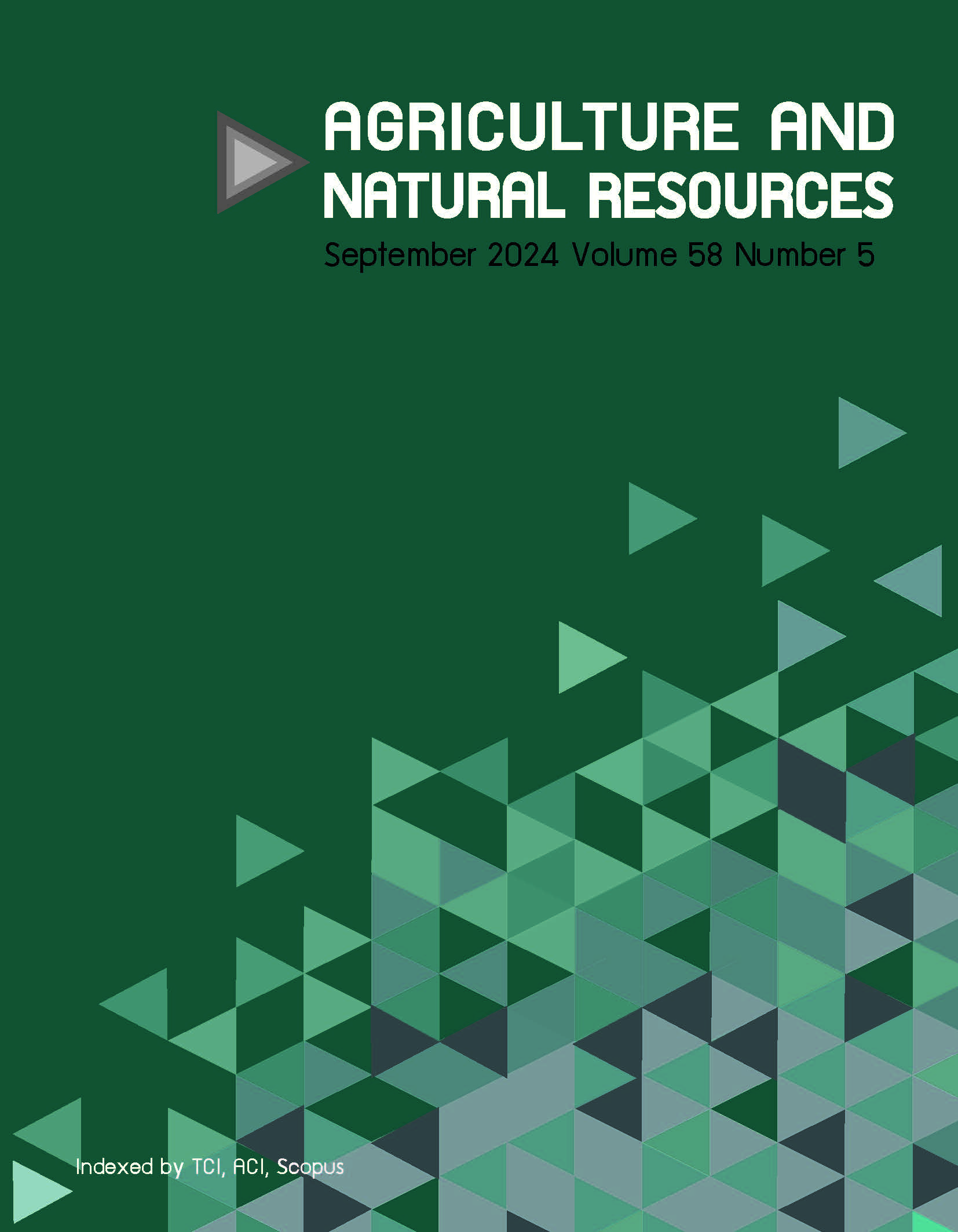Optimizing growth and production efficiency of snakeskin gourami (Trichopodus pectoralis) through intensive cage culture: Impacts of culturing season and sex
Keywords:
Cage culture, Harvested body weight, Intensive system, Snakeskin gouramiAbstract
Importance of the work: The influence of season initiation and sex on the intensive cage culture of snakeskin gourami has largely been unexplored. This study aims to address
this gap by examining how these factors affected body weight at harvest.
Objectives: To assess the effects of culturing season initiation and sex on the body weight of snakeskin gourami reared in intensive cage culture.
Materials and Methods: Data were collected from 941 specimens across eight production batches harvested between 27 November 2021 and 4 September 2022. Analysis of variance and multiple comparisons were conducted to determine the influence of sex, culturing season initiation and culturing period on body weight at harvest.
Results: The average initial body weight ranged from 8.21 to 23.30 g, with a survival rate of 93.02%. The mean body weight (± SD) in males (162.95 ± 2.53 g) was significantly (p < 0.001) smaller than in females (208.15 ± 1.85 g). Fish cultured in summer had significantly (p < 0.001) higher body weights (200.43 ± 3.04 g) compared to those in
the rainy (179.05 ± 3.27 g) or winter (177.18 ± 2.05 g) seasons. Total yields ranged
from 932.5 kg to 1,081 kg, with costs in the range USD 1.11–1.21/kg. Winter had
the highest profit (USD 0.93/kg), followed by summer (USD 0.92/kg), while the
rainy season had the lowest profit (USD 0.67/kg), with no significant differences between the rainy and winter seasons.
Main finding: Snakeskin gourami, with larger females, adapted well to intensive cage culture. Culturing in the summer yielded optimal growth, offering a strategic advantage for maximizing production efficiency. Farmers should plan cycles to prioritize summer culturing and understand sex-based growth differences.
Downloads
Published
How to Cite
Issue
Section
License
Copyright (c) 2024 This is an open access article under the CC BY-NC-ND license (http://creativecommons.org/licenses/by-nc-nd/4.0/), production and hosting by Kasetsart University Research and Development Institute on behalf of Kasetsart University.online 2452-316X print 2468-1458/Copyright © 2022. This is an open access article under the CC BY-NC-ND license (http://creativecommons.org/licenses/by-nc-nd/4.0/),
production and hosting by Kasetsart University of Research and Development Institute on behalf of Kasetsart University.







